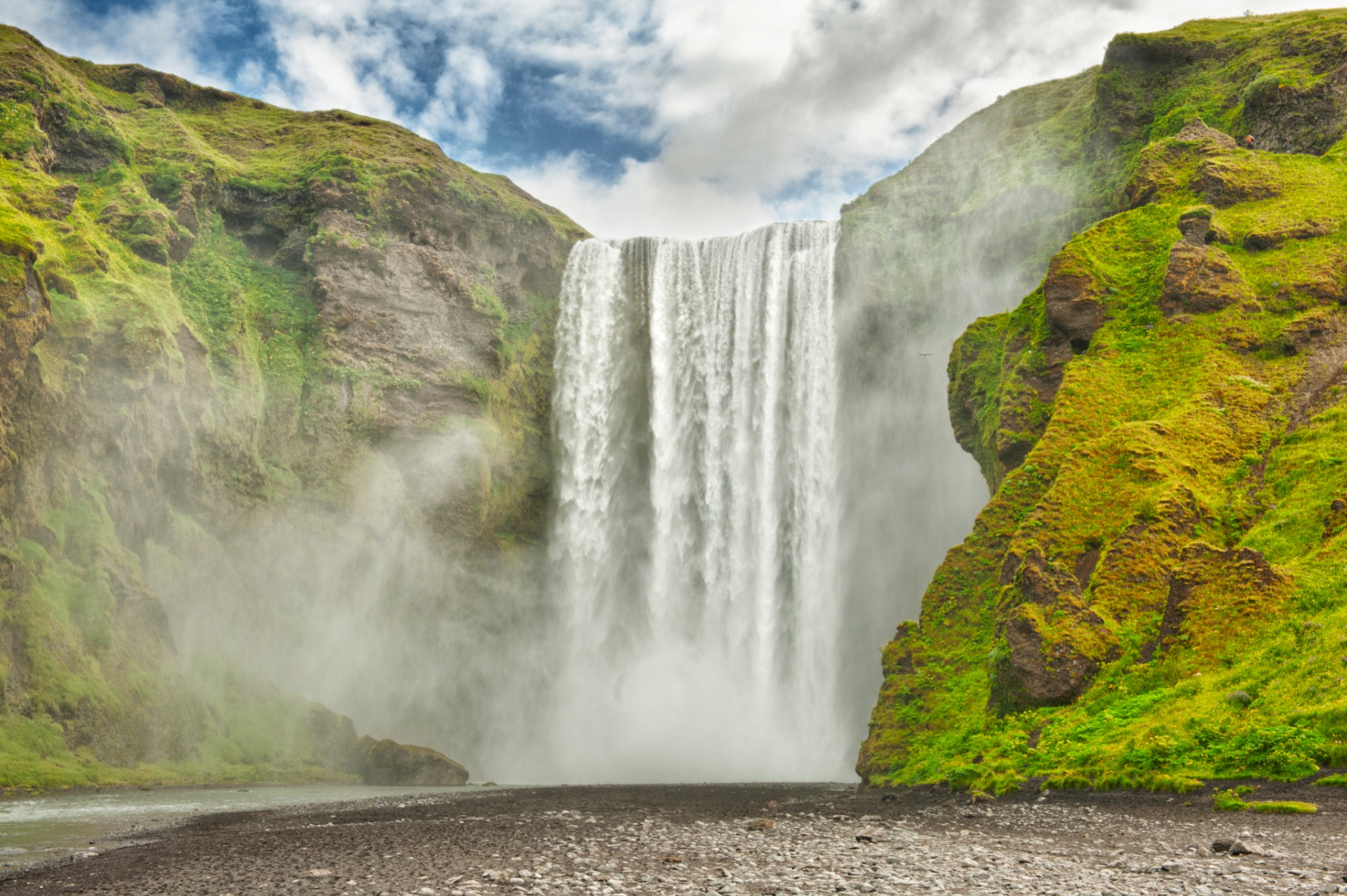

The origins of how life on Earth arose remains a deep existential and scientific mystery. It’s long been theorized that our planet’s plentiful oceans could hold key to the secret. A new study from scientists at Purdue University could advance that idea one step further.
The paper published, on October 3 in the Proceedings of the National Academy of Sciences (PNAS), look at peptides: strings of amino acids that are important and tiny building blocks of protein and life itself. The authors found that amino peptides can spontaneously generate in droplets of water during the quick reactions that happen when water meets the atmosphere, such as when a waterfall crashes down to a rock and the spray is lifted into the air. It’s possible that this action happened when the Earth was a life-less, volcanic, watery, molten rock-filled planet about four billion years ago when life first began.
“This is essentially the chemistry behind the origin of life,” Graham Cooks, an author of the study and professor of analytical chemistry at Purdue, said in a press release. “This is the first demonstration that primordial molecules, simple amino acids, spontaneously form peptides, the building blocks of life, in droplets of pure water. This is a dramatic discovery.”
[Related: A primer on the primal origins of humans on Earth.]
In the study, the authors write that this discovery provides “a plausible route for the formation of the first biopolymers,” or the complex structures produced by living things. Scientists have been chipping away at the goal of understanding how this works for decades, since decoding the secret of how (and even why) life arose on Earth can help scientists better search for life on other planets, or even moons in our galaxy and beyond.
Understanding this water-based chemistry circles back to the proteins that created life on Earth itself. Billions of years ago, the raw amino acids that built life are believed to have been delivered to Earth by meteorites. These amino acids reacted and clung together to form peptides, the building blocks of proteins and eventually life itself. However, a water molecule must be lost when the amino acids cling together for peptides to form. That’s not easy to do in a planet that is mostly covered in water. Basically, for life to form, it needs water, but also the loss of some water.
Cooks explained this “water paradox,” to VICE. “The water paradox is the contradiction between (i) the very considerable evidence that the chemical reactions leading to life occurred in the prebiotic ocean and (ii) the thermodynamic constraint against exactly these (water loss) reactions occurring in water. Proteins are formed from amino acids by loss of water” and “loss of water in water will not occur because the process will be reversed by the water (thermodynamically forbidden).”
The new study has taken a rare glimpse into the Earth’s early years, when nonliving compounds suddenly combined to form living things. This process of nonliving things giving rise to life called abiogenesis and it is a still not completely clear how it works. Since peptides form the basis of proteins (and other biomolecules that can self-replicate), the creation of peptides is a crucial step in abiogenesis.
[Related: Comets Could Have Kickstarted Life On Earth And Other Worlds.]
Cooks and his team demonstrated that peptides can readily form in the kinds of chemical environments that were present on Earth billions of years ago. A key aspect, however, is the size of the tiny droplets flying through the air or sliding down rocks, interacting with the air and forming quick chemical reactions. “The rates of reactions in droplets are anywhere from a hundred to a million times faster than the same chemicals reacting in bulk solution,” said Cooks.
This speedy chemical reactions do not require a catalyst to begin the reaction, which made the evolution of life on Earth possible. The team used “droplet fusion” experiments to reconstruct the possible formation of peptides, that simulate how water droplets collide in the air. Understanding the chemical synthesis process at play when amino acids built themselves into protein could help synthetic chemists speed up the chemical reactions critical to creating new drugs and therapeutic treatments for diseases.
“If you walk through an academic campus at night, the buildings with the lights on are where synthetic chemists are working,” Cooks said. “Their experiments are so slow that they run for days or weeks at a time. This isn’t necessary, and using droplet chemistry, we have built an apparatus, which is being used at Purdue now, to speed up the synthesis of novel chemicals and potential new drugs.”
